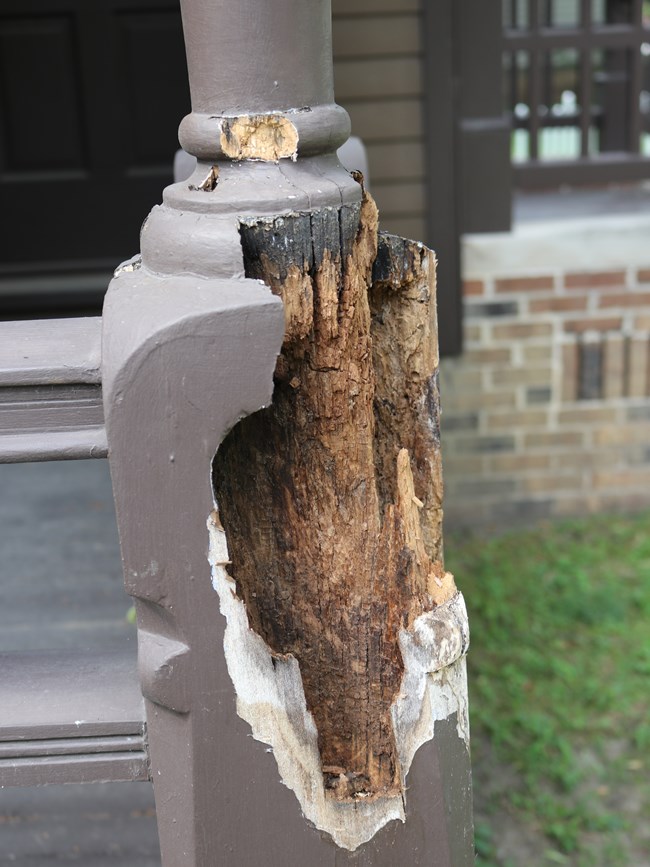
NPS/John Popolis In the 1840s, Mr. Lincoln planted an American elm tree in front of his house. In 1906 it was destroyed by a storm. The replacement elm was destroyed by Dutch elm disease, which killed many elm trees in the neighborhood and throughout the Springfield area. In an attempt to control this deadly fungus, many hardier disease-resistant varieties of the elm tree were planted. Several are on site today, including Red elm (Ulmus rubra), Chinese elm (Ulmus parvifola), and Siberian elm (Ulmus pumila). In 1987 – 88, the National Park Service took apart the Lincoln Home, clapboard by clapboard, in order to repair and restore any damage sustained over a century of use. Restoration specialists discovered that termites had weakened a central weight-bearing beam in the home. Workmen replaced the original beam with wood from that same time period (ca. 1860) and reinforced the structure with steel. This prevented further deterioration and added support. Today, Lincoln Home National Historic site staff monitor the grounds and structures for pest problems. |
Last updated: August 22, 2022
